The post Survey: Amazon beats Google as starting point for product search appeared first on Search Engine Land.
Please visit Search Engine Land for the full article.
When it comes to lead generation, quality matters over quantity. But by the same token, people don't like being sold to and they resent the notion that they're simply “numbers in a database somewhere”. With that in mind, Ascend2 conducted research on the most effective tactics for both lead generation and lead nurturing. What they found out may surprise you.
Email marketing is still king of the hill when it comes to lead generation effectiveness
It may come as no surprise, but for sheer ease of implementation and effectiveness of results, nothing beats good, old-fashioned email marketing. Websites and landing pages are close behind, with content marketing making noticeable gains. It's also worth noting that the survey shows email marketing as one of the easiest tactics to implement.
Email marketing is one of the easiest tactics to launch
But notice the relative difficulty of other measures such as content marketing. Sure, it gets decent results, but at what cost? Effectiveness and difficulty are tied. Keep in mind, email marketing has been around much longer, and therefore we've had much more time to experiment and learn how to interact with prospects. Huge strides are being made in creating new tools that make content marketing more relevant and personable, but we're still in the collective crawling stages with it.
And while we're on that topic, take a look at testing and optimization. Low effectiveness, relatively high difficulty. Surprised? Don't be. That's because testing and optimization isn't a lead generation strategy in and of itself – it's something you do with the other strategies.
So now we know that email marketing is both one of the best converting and most cost effective measures – what next? Before you load up and catapult a bunch of messages to your prospects' inboxes, remember that you need to nurture the leads you've gotten into your funnel at this point. Fortunately, Ascend2 also looked at the most promising lead nurturing strategies and what trends were getting the kinds of results their teams had hoped for.
When asked the question about the most important objectives of a lead nurturing campaign, the answers were varied. Most responded as you might imagine – to increase conversion rates or open up more sales opportunities.
Right behind these two responses was a surprising answer thrown into the mix – “lead qualification”. This idea namely revolves around ensuring that a lead is best poised to make a decision and convert. This means understanding the difference between “interest” and “intent” – many people are interested in something, but far fewer have an active intent at that point to purchase. As of yet, there are no tools which can seamlessly predict this kind of action, although there are many ways to go through the process. No matter what, it's still a heavy burden on the sales team to discern who's ready to act and who's just a well-meaning enthusiast.
So when it comes to nurturing leads, which strategy came out on top? Here again, email marketing:
But what, specifically is it about email that people respond to? As it turns out, the best effects on lead nurturing come from creating relevant content:
But notice the other points below these – points which have far fewer reported success rates:
These are all the very things that email marketing excels at! You can use your CRM data to segment leads based on the persona they most closely match, as well as what stage they're in when it comes to making a decision. You can personalize your campaign with all the relevant details in the world, but prospects still won't bite.
So far, marketing has tried to create the appearance of relevance in campaigns. We try to do this by personalizing emails to give the prospect more of a sense of “me-to-you” communication. We try to align them with personas like theirs in an attempt to get inside their minds and find out what motivates them to purchase. We look at how close they might be to making a decision and we market accordingly.
The fact is, marketers are both swift and smart in using technology to automate much of their follow-up and nurturing tasks. The problem however is that people know it. They know you're just filling in blanks in a software program or trying to put them into neat boxes based on a few scraps of information that you've gleaned from them.
Of course that begs the question, “How are we supposed to create relevant content when people won't tell us anything about themselves?” They will – you simply have to ask. When was the last time you connected with a prospect and really meant it when you said, “how can we help you?” We're so conditioned to answer that we're “just looking” for fear of being sold to.
Maybe the better question is, “what's challenging or frustrating you? What can I help solve for you?” If a prospect knows that you can relate to them personally, they'll be much more open to sharing with you. And while it's not currently possible to write content that appeals to everyone at every moment, it is possible to open up communication and get suggestions for new content, while acknowledging the source.
The bottom line whether you're looking to attract more leads or help grow the leads you have is shifting your approach from pure sales and marketing to problem solving. Email is a prospect's open invitation to get as close to them as you possibly can. It's something they can access anytime, anywhere. And it's the best shot you're going to have at learning about their unique issue and demonstrating precisely how your product or service solves it. Not in a high-pressure, hype-filled way, but in a friendly, open, personal way.
We have all the right tools and processes – we just need to add in the human factor.
What are your thoughts on using email marketing for lead generation and nurturing? Have you found in your own experience that other tactics work better? Do you think we should spend less time automating and more time communicating? Share your thoughts and perspectives with us in the comments below.
About the Author: Sherice Jacob helps business owners improve website design and increase conversion rates through compelling copywriting, user-friendly design and smart analytics analysis. Learn more at iElectrify.com and download your free web copy tune-up and conversion checklist today! Follow @sherice on Twitter, LinkedIn or Google+ for more articles like this!
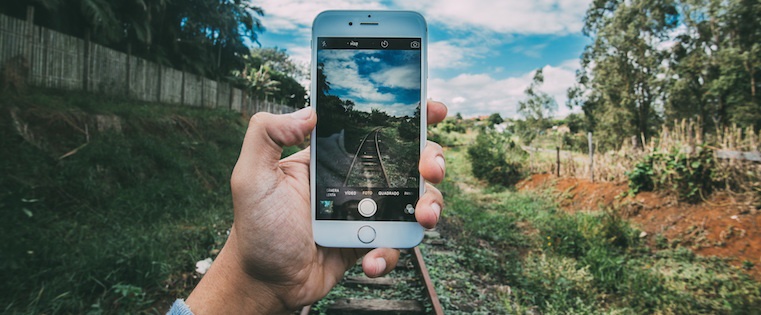
This week, Facebook announced grand plans to take their already successful live broadcasting platform to great heights. The announcement included product updates like two-person broadcasts, waiting rooms for viewers, and Snapchat-esque filters all in the works.
With these updates in mind, carving out a strategy for Facebook Live seems like a no-brainer.
Oh, and did we mention the potential live video has for Facebook engagement? Initial data from Facebook revealed that people comment 10X more on Facebook Live videos than on regular videos.
Now, we get it. Going live, well, it's kinda scary. What if you mess up? What if the camera wigs out? There are a number of things that could go wrong. But while you're contemplating the risk, a ton of brands are out there engaging their audience in some really exciting and personal new ways.
To help you shake the nerves, we put together a list of some of the best Facebook Live broadcasts we've ever seen. From live debates to intense trainings, you'll get a little taste of everything to inspire you to fire up a stream for your own company.
(And read this article for more tips on how to get started with Facebook Live.)
Tough Mudder is an endurance event series known for its military-style obstacles and enormous sense of community. A few weeks ago, they took to Facebook Live to broadcast their Merrell Michigan Training Event with Coach T. Mud, a.k.a. Kyle Railton. Infectious energy aside, this stream made the list for a few reasons.
For one, it serves as a great use case for how to keep your community engaged -- even when they can't make it to your event. By bringing the event right to their audience's desktop or mobile device, they can choose to follow along with the training, or simply get a sense of what they might be signing up for.
At the beginning of the broadcast, Coach T. Mud gives a shout out to the Tough Mudder Snapchat handle to encourage those at home -- and at the event -- to follow along with the training there. This is a great way to cross-promote your channels and increase overall engagement.
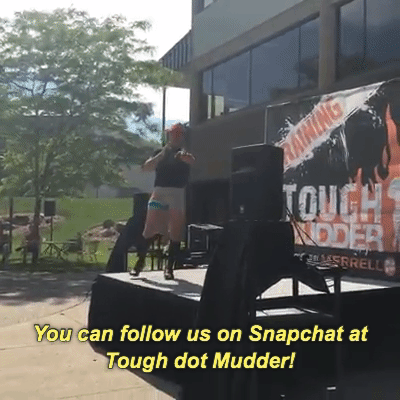
Around the six-minute mark, the person filming chimes in to reiterate where they are streaming from. She does the same thing again around the eight-minute mark. This is a great strategy for keeping those who might be joining mid-stream in the loop.
Finally, we really love the way Coach T. Mud gets up close and personal with some of the attendees around the 18-minute mark. While he mainly uses this time to get to know the Tough Mudder community a little better, he also sneaks in some subtle promotions, like this:
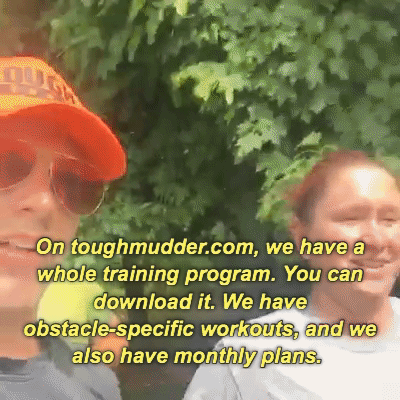
Well played, Coach.
(Want to learn more about Tough Mudder's growth strategy? Check out this episode of The Growth Show featuring Tough Mudder Founder and CEO Will Dean.)
One really interesting route brands have taken with Facebook Live is the series approach. In other words, they broadcast a themed video series on a set date and time, usually weekly.
Why does this work so well? As Author Laura Vanderkam explains: "TV shows come on at certain times so people get in the habit of watching them. You can do the same with Facebook Live."
One of my favorite examples of this come from the folks at Benefit, who host a series called "Tipsy Tricks" every Thursday at 4:15 P.M. Here's one of the episodes from a few weeks back:
One of the most interesting things they do throughout this particular video is ask questions of the audience to inform how the video will play out. For example, around four minutes in, the host polls the audience to determine which product they'd like to see them use in the makeup look they're creating.

Then, they give a couple of minutes to let the audience weigh in before following through based on the responses -- it's sort of like a beauty-themed, choose-your-own-adventure game.
This strategy aims to keep those watching engaged, while also helping the folks at Benefit learn more about their audience's product preferences.
Another way they're keeping the audience involved? Benefit allows their viewers to submit ideas via Facebook Live comments or Snapchat to help the hosts brainstorm future topics to cover. You can see this in action by checking out the comment thread on this video, where they ask viewers to Like the comment if they'd like to see an episode about concealing:

The next Facebook video on the list comes to us in two parts. In an interesting series of events, Jason Carr, a former news anchor for FOX 2 in Detroit, takes Facebook Live viewers on a ride to his new gig at WDIV-TV, Local 4 News ... but he doesn't tell them that. At least not in the beginning.
The first video begins with Carr explaining that he's going Live to follow up on a promise he made during his final broadcast for FOX 2 earlier that morning. This was his first right move: Using Facebook Live to extend the conversation following something like a webinar, interview, or panel discussion is a great way to connect with your audience while they're already engaged.
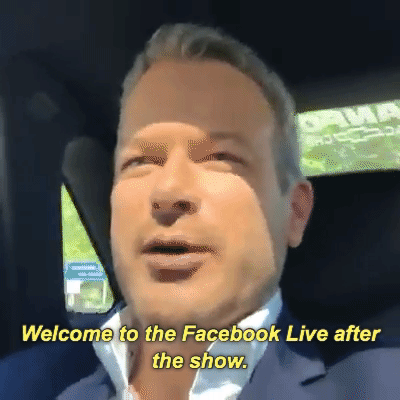
Viewers watch as Carr -- who is broadcasting live from the back of a Cadillac -- takes a trip to what he refers to as "parts unknown." During the first half of the stream, he provides some context around leaving the station, while engaging with viewers in the comments and continuing to build suspense for where he's headed.
The whole suspense aspect is key, as it helps Carr spark his audience's curiosity. After all, a little curiosity can go a long way: Research from the University of California revealed that sparking participant's curiosity with the right question helped to prepare their brain for learning, while also making learning a more rewarding experience.
Just before the stream wraps up, we see Carr arrive at his secret destination -- his new station -- where he announces that he'll pick back up once he has a chance to go in and get settled.
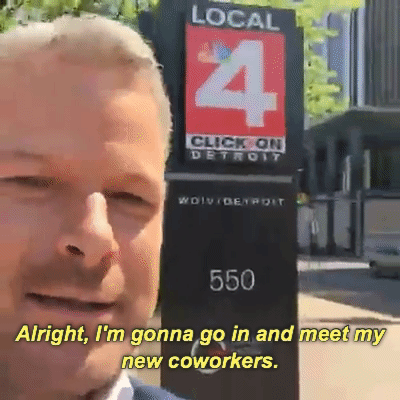
A little over an hour later, Carr fires up his stream again to give viewers a behind the scenes look at his first appearance on the new job.
Talk about a creative way to announce a new hire.
This Grazia/Facebook collaboration just might be the most interesting use case for Facebook Live on our list. This month, the team at Grazia UK, an Italian women's magazine with international editions, headed off to Facebook's London headquarters to piece together their first "community issue."
They took to Facebook Live to document a week's worth of behind-the-scenes footage, allowing their audience to participate in things like their editorial meeting, cover shoot, and GraziaxFB Brexit Debate.
While all of the footage really helped to pull back the curtain for Grazia's audience, the GraziaxFB Brexit Debate was one of the most successful broadcasts of the week -- and for good reason.
The debate, chaired by The Guardian's political editor Anushka Asthana, was centered around the UK's decision to remain in or exit the European Union. The panelists were each given time to discuss their views, while also leaving time for questions from both the live audience and Facebook audience.
Asthana encouraged Facebook Live viewers to submit their ideas via the hashtag #GraziaxFB at the beginning of the broadcast.
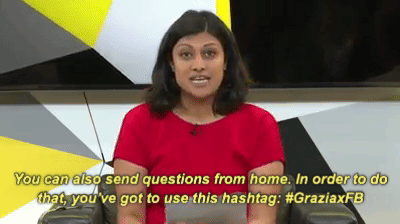
Note: If you're hosting a live debate, discussion, or training, coming up with a hashtag in advance is a great way to organize the submission process for questions. (Read this article for tips on how to use hashtags on Facebook, Twitter, and Instagram.)
Overall, the discussion was timely, well executed, and helped to get the Grazia community talking about not only the Grazia/Facebook collaboration, but also the larger political issue at hand.
In the words of Grazia Editor Natasha Pearlman: "This is a fantastic opportunity to bring Grazia to life for our readers, and at the same time launch our real-life community, in partnership with the biggest social media network in the world."
"The Grazia audience aren't just readers, they are part of the brand – their views and opinions shape our content and really matter," she went on to explain. "Now they can participate with us in real time."
When you live in an apartment in Boston (or any city, really), you quickly learn how to make the most of a small kitchen. But this video from Tastemade takes that concept to a whole new level.
According to Tastemade's Head of Productio Jay Holzer, the tiny cooking concept was inspired by one of Tastemade's Japanese partners. As it turns out, miniature cooking is quite popular in Japan, as a result of kawaii -- the quality of 'cuteness' -- which is plays a prominent role in Japanese pop culture.
While Tiny Kitchen started as a pre-recorded series, the folks at Tastemade tested their luck with Facebook Live by recording this real-time cooking demonstration:
What's great about this particular use case is that it can be enjoyed without sound. In other words, viewers can tune in without having to stop and adjust their volume, or put on headphones.

The strangely fascinating footage is really easy to consume, which likely contributed to the success of the original episodes. By going live, Tastemade simply added a unique interactive element. And 3.7 million views later, they've proved it works.
The lesson? Sometimes, less it more.
While BuzzFeed recently made headlines for their not-so-perfect Facebook Live attempt with none other than the president of the United States, we can assure you that they know what they're doing.
On a much less serious note, the folks at BuzzFeed took to Facebook Live this past March to host an epic live dance battle.
But this wasn't just any old dance battle: "Dance Craze Battle: Live" was an interactive competition that required the audience to vote on performances and submit suggestions for dance moves.
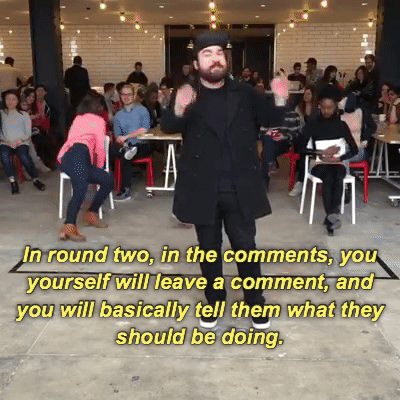
In between the first two rounds, the host took time to get to know each of the contestants a little better by asking them a few questions. This was really smart for two reasons:
With the help of user submissions in round two, viewers watched as their ideas came to fruition in the form of some pretty interesting dance moves, like "crying college student":

After each dance, the person monitoring the comments section prompted viewers to cast their vote:
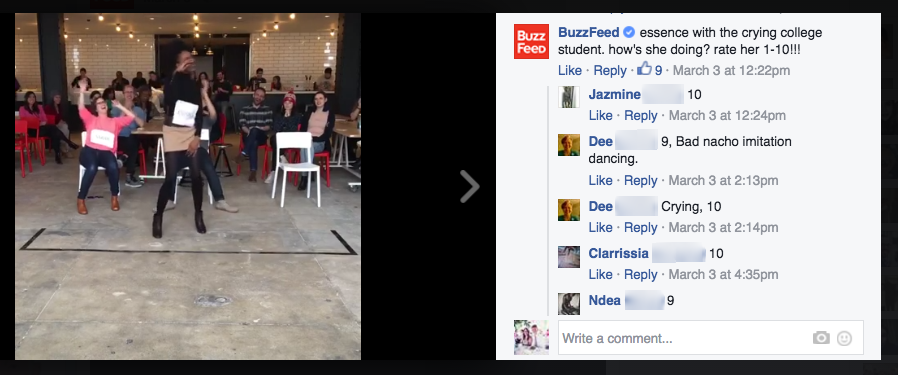
And the entire thing came to a close with a spirited dance party ... because why not, right?

Even though this broadcast carried on for half hour, the level of engagement likely helped them keep viewers interested all the way through. When you're planning a Facebook Live video, keep in mind that length isn't necessarily a bad thing, as it provides you with a chance to reach more people.
The folks at Callaway Golf are no strangers to live video. In May 2015, Callaway debuted a live show hosted by their SVP of Marketing and Brand Management Harry Arnett. While this particular live series didn't unfold via Facebook Live, it's likely that it made the transition to broadcasting content live on Facebook much easier.
According to Arnett, the experience of live video brings Callaway back to their roots: "We felt like if we could figure out a way to be unique in it, provide utility to it, and be a contributing citizen in the community of golfers, we could become sort of the people's brand," he told Golf Digest, "which was very closely connected to the DNA of the company when it got started 20 years ago."
A great example of their segue into Facebook Live is this exclusive tour of Arnold Palmer's office, led by Palmer's assistant and longtime friend Doc.
For golf enthusiasts, this is a dream come true. After all, Palmer is known to be one of the greatest players of all time. But it's the experience that the video delivers that makes it really interesting for those tuning in.
For one, the person behind the camera makes an effort to keep viewers involved throughout the tour. For example, around five minutes in, he thanks the audience for tuning in and checks in to see if they have any specific questions or things they'd like to see. This is a great way to keep people who might be thinking about dropping off engaged.
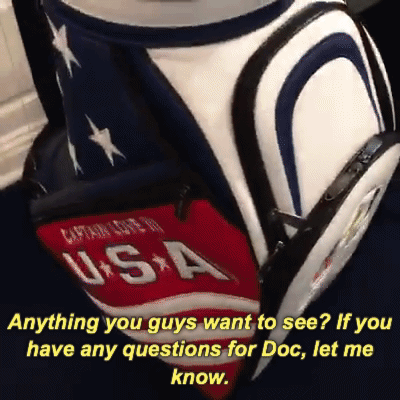
Around the 20-minute mark, the cameraman also takes a minute to reintroduce the tour guide, Doc, to clarify his relationship with Palmer for those just tuning in.
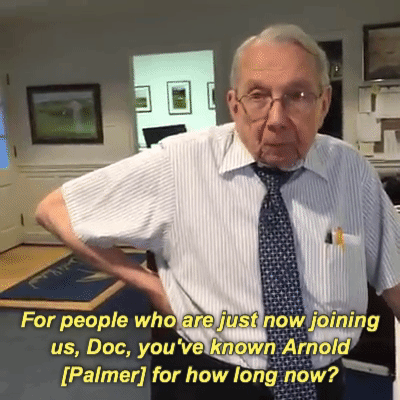
While there are mentions of Callaway products throughout the video, it's by no means the main focus. Instead, the cameraman works to surface interesting facts and stories from Palmer's assistant to keep those geeking out at home both entertained and engaged. For example, around the 23-minute mark, he prompts Doc to tell the story behind Palmer's infamous umbrella logo:
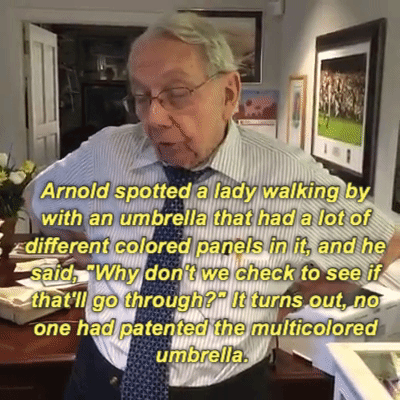
Pretty cool, right?
If you're just getting started with Facebook Live, make note of Callaway's tactics. And remember: Your broadcast doesn't have to be all about your product or service for it to be successful. At the end of the day, you want people to remember the experience you provided them, which will ultimately help to keep you top-of-mind.
Now that you're feeling inspired, it's time to get out there and try it for yourself.
If you're feeling up to it, but still think you need a little training, check out this post from my colleague Lindsay Kolowich. She'll walk you through how to broadcast on Facebook Live, how to analyze your live video's performance, and the top tips and tricks for getting the most out of the platform.
Have you experimented with Facebook Live? What is your favorite example? Share your thoughts with us in the comments section below.
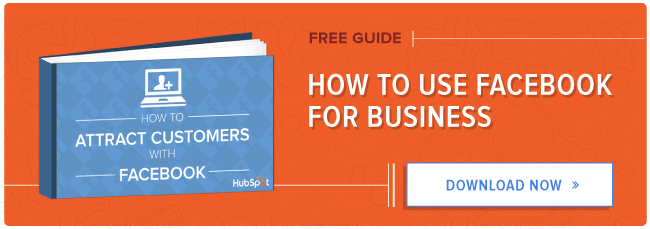
 Implementing an Inbound Marketing campaign is not always an easy process.
Implementing an Inbound Marketing campaign is not always an easy process.
Sure, you may be aware of the individual components that Inbound marketing campaigns need. But putting those pieces together can be hard. It's easy to go wrong, make mistakes, and end up with results that are wildly different from your goals.Campaign mistakes can dramatically hinder lead generation and ROI performance. So to help you avoid error in your strategy planning, here are the most common mistakes that Inbound campaigns encounter - and how to fix them.
It's time to upgrade your SaaS marketing team.
With the right tools, your staff has the opportunity to acquire new users, offer quality customer service, and boost retention rates.
However, some businesses shy away from experimenting with new tools.
“New technology can be scary, and you don't want to struggle with a tool that has a steep learning curve. Unfortunately, this means companies are missing out on some great products that can make life and business so much easier,” writes Travis Wright, chief marketing technologist at CCP Global.
The key is to create a marketing stack that fits your SaaS's needs, not the latest trends. Moreover, don't feel obligated to have a tool for every function of your business. Only try a tool when you think it can solve a problem or make your team more efficient.
Here are 23 tools to consider for your marketing stack.
Research reveals that “76% of consumers look at customer service as a test of their value to a brand.” Give your users value by answering their questions through customer support.
HappyFox handles all inbound requests in one ticketing system. And your service reps can contact multiple people from the same organization about a resolution. Unlike the some other help desk companies, you receive a secure help desk with SSL integration and 24/7 support at no extra cost.
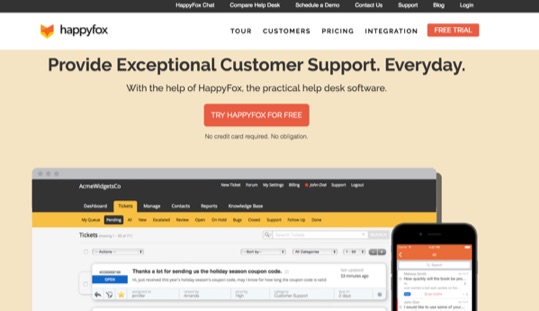
Freshdesk's shared inbox lets your team collaborate and resolve issues together. You also can set requirements for resolution times.
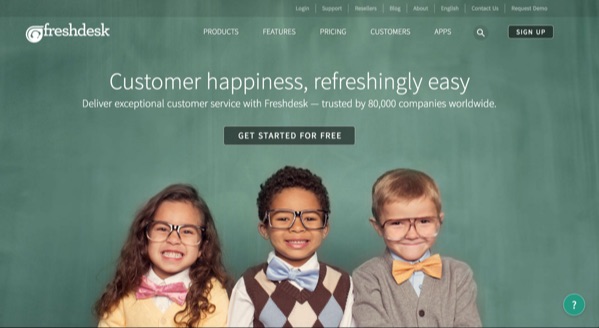
Onboarding customers is vital to ensure people understand and use your product effectively. This process is a way to not only familiarize consumers with your app, but also to formally introduce them to your brand.
Kate Griggs, product owner at InterContinental Hotels Group, says, “User onboarding is one of the most crucial–and frustrating–elements of any product launch. It is the first impression, and it needs to be planned and analyzed for future adoption and growth.”
Appcues enables you to build a personalized user onboarding experience. With targeting capabilities, you can show the right experience to the right user at the right time. It's highly recommended because non-developers can run experiments and improve your activation strategy.
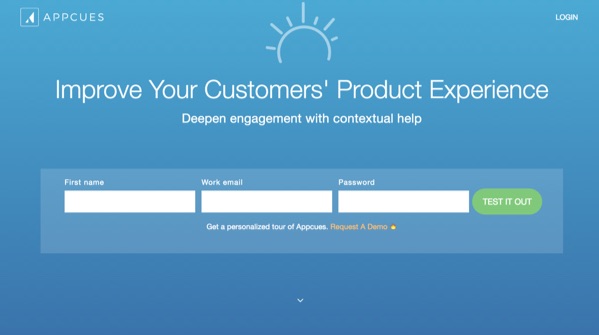
WalkMe gives you the control to change content, design, placement, and functionality of each step of the on-screen guidance. Its featured text option draws the user's attention to important announcements.
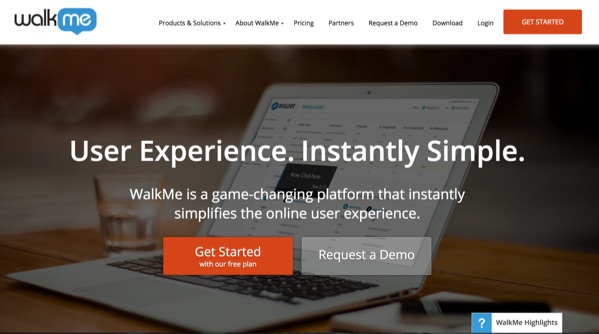
People are constantly sharing information online. And right now, there are 2.3 billion active social media users. Your SaaS brand can learn what your customers are saying and can engage directly with social media.
Snapchat gives brands the chance to interact with customers. Boost brand awareness with short video clips. Moreover, the platform is America's second-favorite social network. That opens the doors to introduce your product to more interested buyers.
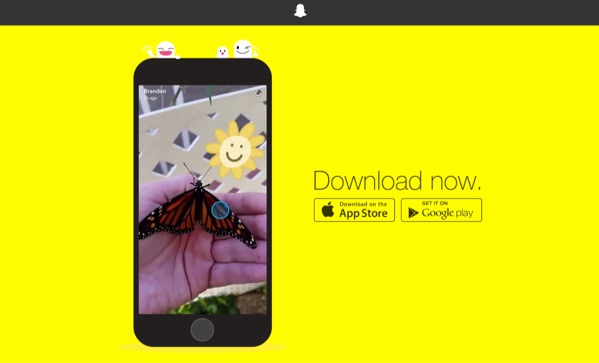
Mention monitors conversations about your brand. Also, identify influencers and subject matter experts in your industry.
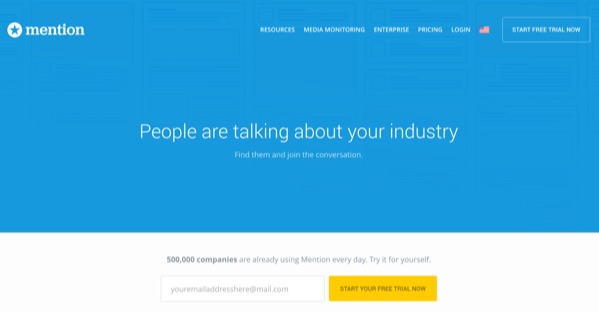
Buffer helps drive more clicks on your posts and traffic to your site. The publishing tool lets you share content across multiple social networks.
Simplicity is the best word to describe Buffer. They offer simple analytics, making it easy to see your best performing social messages.
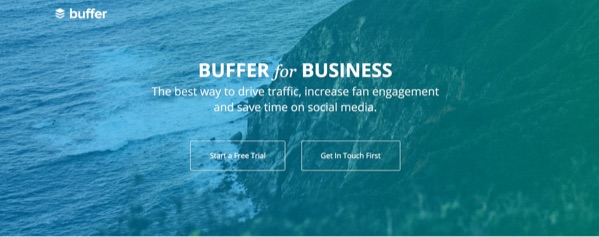
Your SaaS can benefit from gathering qualitative and quantitative data from your website. It moves your team to create a worthwhile online experience for your customers.
“When you are armed with this knowledge, you get to see how effective your website is and what changes you need to make in order to make it even better,” writes John Jantsch, founder of Duct Tape Marketing Consultant.
Kissmetrics tracks individual and group visitor behavior. You'll collect data from their first anonymous visit to their lifetime value.
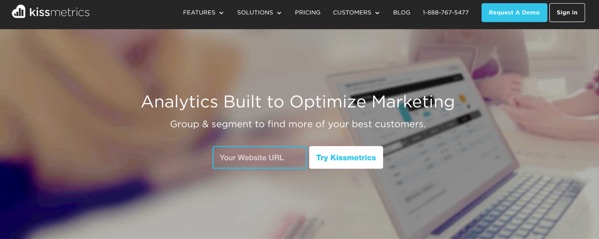
Crazy Egg lets your team see exactly what visitors are doing on your website. For example, you'll discover where people are clicking and where they stop scrolling on the page. Their Confetti Tool is really useful. It distinguishes your clicks, segmenting them by referral sources and search terms.
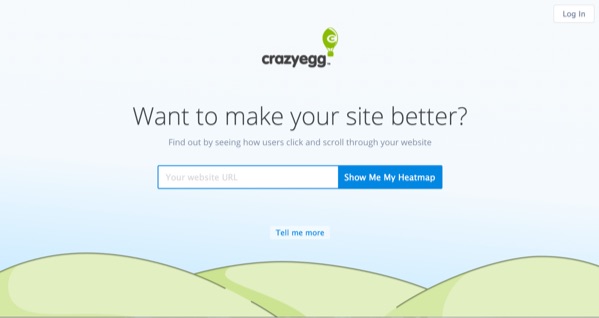
Make it easy for your customers to find you. Work with your team to generate visits to your site. If search engines can't find you, then your ideal customers can't either.
“…[B]usinesses are normally somewhat reluctant to get involved with SEO in the first place, and want to start small, with the basics due to budgetary concerns…If you want to see better results, you have to scale upward, in both quality and volume,” writes Forbes contributor Jayson DeMers.
Moz Pro centers around improving your rankings and search engine visibility. And you can compare your mobile vs. desktop rankings.
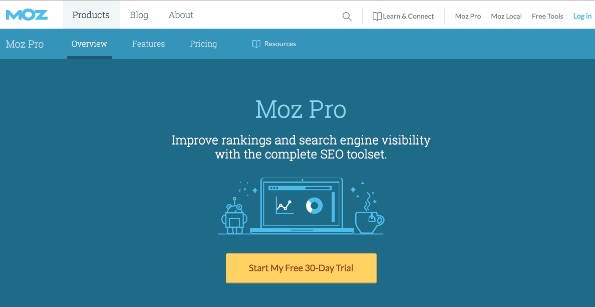
SEMrush finds long tail keywords and phrase matches. You also can monitor your competitors' inbound links. And their US keyword database contains more than 80 million keywords!
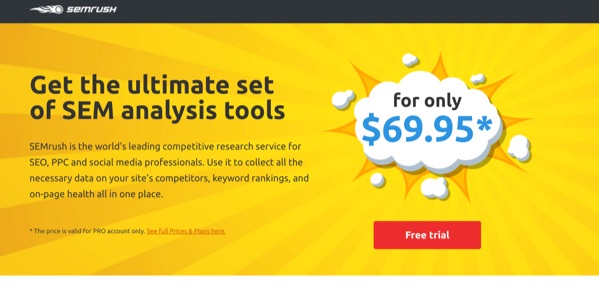
A Forrester study reports that “81% of marketing decision makers place customer loyalty as a top priority for improvement.” Customer expectations for loyalty programs have risen. And consumers desire incentives for their brand loyalty.
Loyalis is a rewards program created to boost your customer retention. You can even entice buyers with points if they share information via social media.
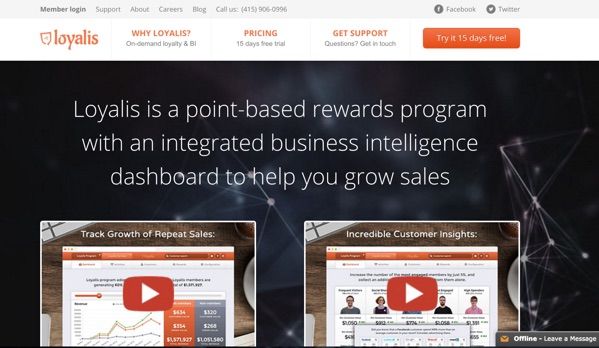
Social Annex helps your team deliver personalized actions. The software makes it easy for your customers to earn points and redeem prizes. Gamification is their signature tool. The platform has components like competition, tiers, and badges to enhance brand engagement.
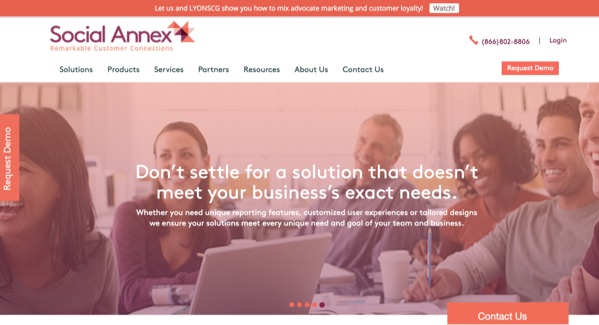
Communication is crucial to building quality customer relationships. Email is an effective tool to educate and respond to your consumers.
Customer.io helps your team send personalized messages. And connect every message to an action.
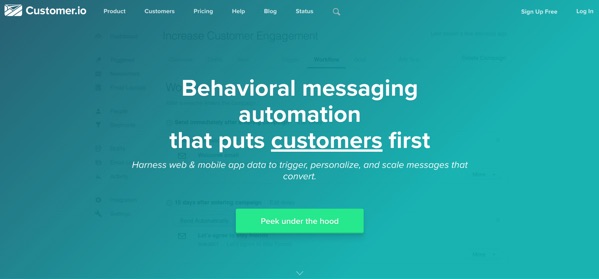
Vero empowers your team to segment users and combine conditions to send targeted campaigns. Sync with your customers' routines and send emails based on time zones.
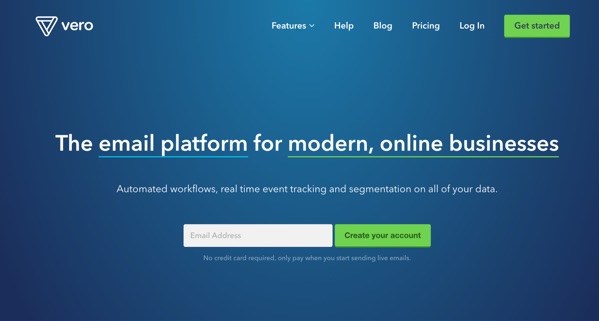
According to Demand Metric, content marketing “costs 62% less than traditional marketing and generates about 3 times as many leads.” Consider integrating content into your marketing strategy.
CoSchedule equips you with a drag-and-drop marketing calendar. That way you can plan, publish, and promote without the hassle.
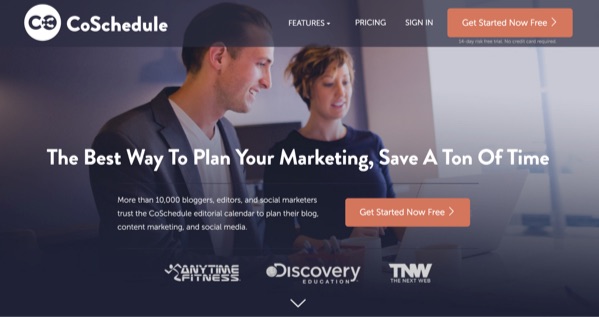
Buzzsumo uncovers the most shared content across social networks. Receive content alerts regarding keywords, authors, and domains. Their chrome extension places all the necessary information at your fingertips.
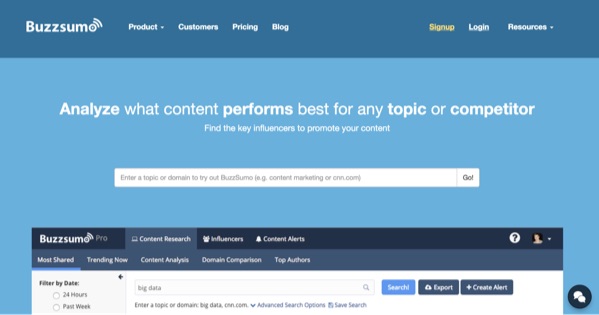
Notifier scans your blog posts, finds people you mentioned, and then lets you notify them. It's a one-stop shop to bringing awareness to your content.
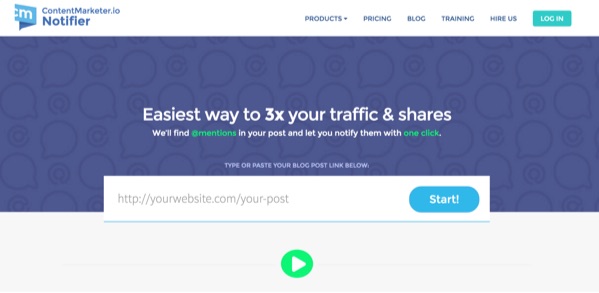
Are your customers satisfied? Feedback guides your team's decision-making and influences your customer success roadmap.
“Every business hopes to better its profits. The best way to do so is to serve the customer as fully as possible, especially if you can get each consumer to lead the way. By seeking customer feedback, many businesses gain a clearer picture of ways they can improve,” states Larry Alton, a business and online marketing consultant.
Riddle gathers deep audience insight. Collect business intelligence through engaging quizzes and polls.
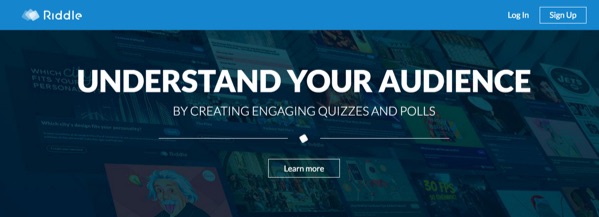
Formstack makes it possible to compile customer data. With A/B testing, you'll find out which forms convert at higher rates. Their Social Autofill feature lets your users autofill form fields with social profiles.
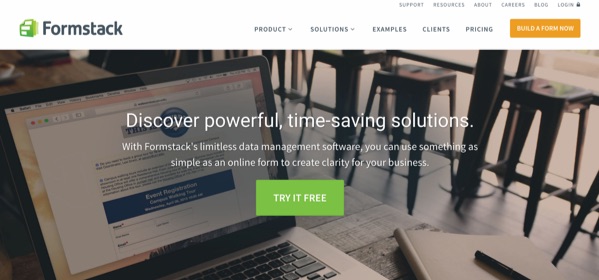
Hubspot reports that “64% of users are more likely to buy a product online after watching a video.” It might benefit your team to create more videos.
With Animoto, gain access to dozens of video styles with unique filters and transitions.
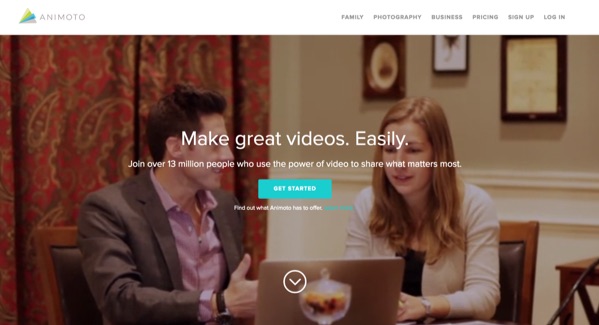
Wistia allows you to restrict where videos are played. Every view generates a heatmap, showing exactly which parts of the video the viewer watched. Also, Wistia thrives on collaboration, share videos and analytics with your team and see their time-coded comments.
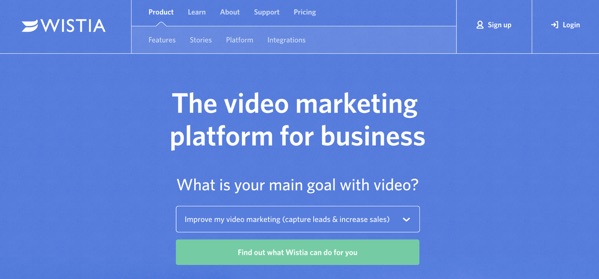
Vimeo enables you to upload and share your videos. They have a free plan and a paid plan that costs as little as $59.95 per year.
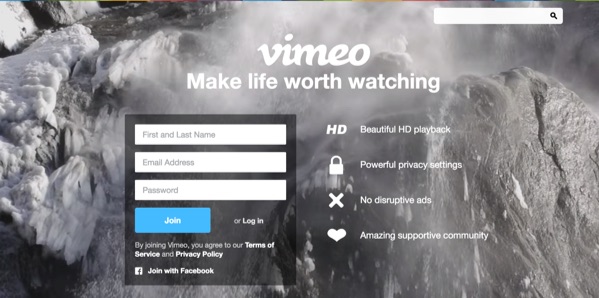
Useful tools help your team work more efficiently. So, don't be wary about experimenting with different options.
However, be mindful about how a tool can solve your company's challenges. You won't need a tool for everything.
Start exploring. Upgrade your marketing stack.
About the Author: Shayla Price lives at the intersection of digital marketing, technology and social responsibility. Connect with her on Twitter @shaylaprice.